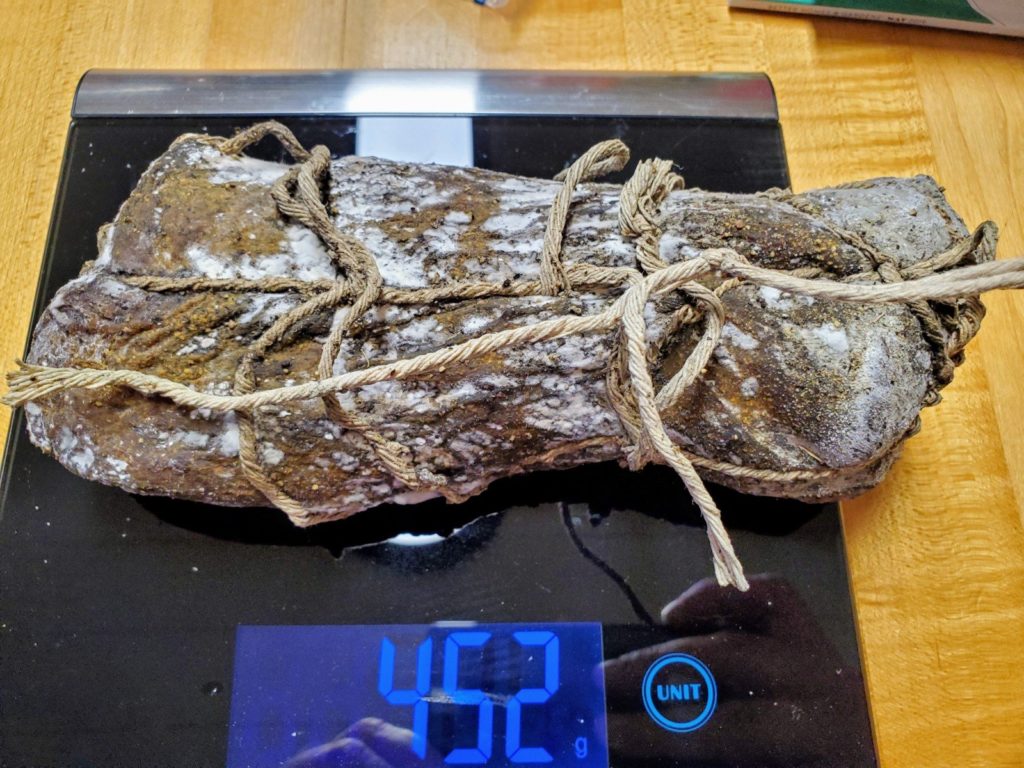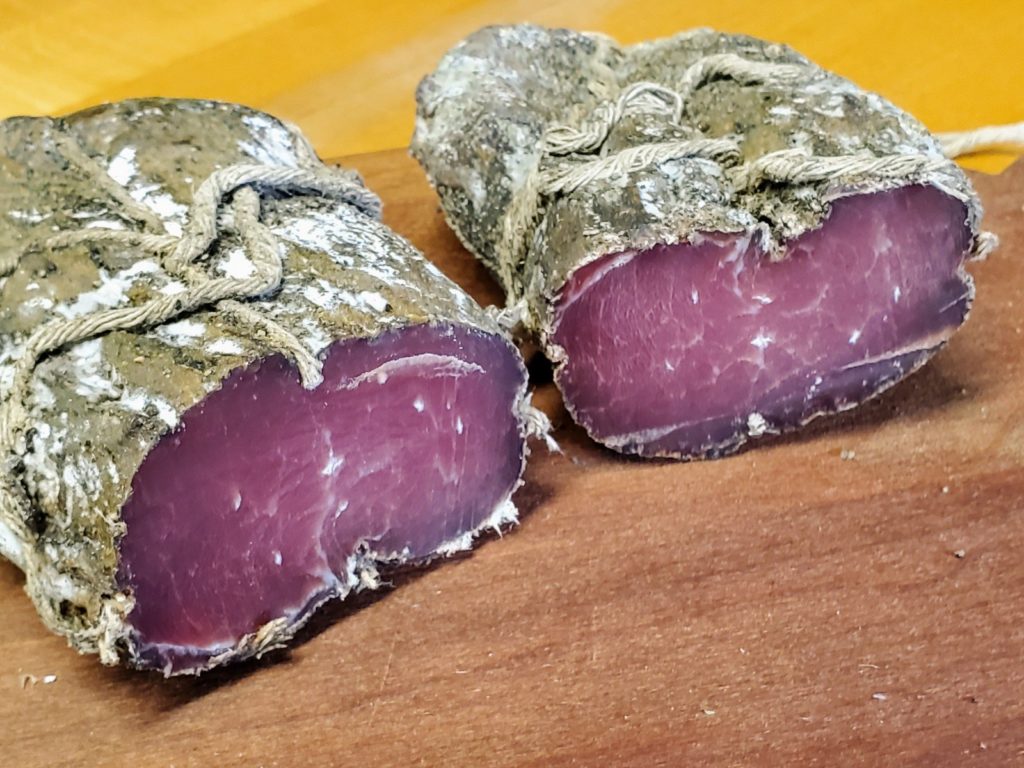A couple of months ago, I got to attend a really cool class on how to disassemble a pig and turn it into various sausages, pâtés, and other items of charcuterie. I have been putting off writing my thoughts about this class, because they are numerous, and because they are not entirely coherent. It would have been a preferable to have written that entry before this one, but I didn’t.
Before we dive in; a disclaimer. This post is my best recollection of the process I followed in the creation of my cured pork loin. I ate it, and nothing bad happened to me. If you do this and something bad happens to you, that is on you. I will not be held accountable if you do something wrong and get food poisoning or flatulence or something.

So, anyway, I went to the grocery store to get a pork roast. Obviously, locally-raised, specialty-breed pork would have been preferable to grocery store rubbish. But, I really didn’t want to take a chance on ruining a quality piece of meat on my first attempt at this. I came home with about 2 pounds of pork loin roast.

I found a recipe somewhere online, but I forget where. Apologies to whomever I’m plagiarizing. All ingredients are a percentage of the weight on the pork. You are going to want to do this in grams. The math will get very ugly unless you do it in metric.
| Ingredient | Amount |
| Pork loin | 100% |
| Kosher Salt | 1% |
| Clove | 1 Clove |
| Cure #2 | 0.25% |
| Juniper | 0.20% |
| Fennel Seed | 0.50% |
| Cinnamon | 0.07% |
In my case, my pork loin weighed 956 grams, so I needed about 31.5g of salt, because 956 x 0.033 = 31.584. Get it? Easy. I made a google spreadsheet to keep track.
Mix up all your spices and rub it all over the meat. Cover every surface. Massage it in. Then put it in a ziplock and toss it in the fridge for like 2 weeks. I think the amount of time in the fridge varies with the weight or thickness of the meat. I forget. You will want to research that.

Flip it over every other day or thereabouts. It will be releasing water, and you don’t want one side soaking in it while the other is high and dry. After the two weeks is up, take it out and rinse it off. It will probably feel firmer and denser now that it has lost a bit of water.. Now, you can roll it around in whatever spice mix strikes your fancy. I used black pepper, possibly chili pepper. I should have written it down, but I didn’t. I like spicy things, so there’s a good chance that I used whatever looked spicy in the spice cabinet.
Now, tie it up good with some butcher twine and weigh it. Make sure you write down what it weighs.

Now you know your starting weight, so you can compute your target weight. Target weight should be about 65% of the starting weight. The idea here is that you want to reduce the amount of water in the pork, so that nasty bacteria and stuff don’t have enough available water to work mischief on your product. So write down your starting and target weight. It’s not a bad idea to write them on a tag that hangs on the string with them.
Now, you just hang it someplace with lowish temperature, and high-ish humidity until the weight drops to your target. I hung mine in my basement. The temperature was probably in the 50s F and humidity was around 70-80%. This is way too much humidity, but the basement is was it is, and I wasn’t about to go out an build a fancy charcuterie chamber. I bought a bluetooth temperature / humidity monitor to keep an eye on things.

After a few weeks, it started to grow a furry green mold. It was kind of freaking me out, and so I wiped it off with a paper towel soaked in vinegar, re-peppered it and hung it back up.

After that, I weighed it about every other week, and wrote down the weight. Then, I got busy and totally forgot about this whole project. When I finally remembered, I had overshot the moisture loss mark by quite a lot. My loin had lost over 50% of the starting weight. It was on its way to being pork jerky.

Some people have asked me about the white stuff on the outside. That is mold. I don’t know what type exactly. It grew there of its own accord without my encouragement, and in spite of my efforts to remove it. If you are allergic to penicillin, you may want to be careful about that.
I sliced it open for the first time yesterday. It had a very nice flavor. It was a little chewy, I presume because it had lost so much moisture. I also don’t have a slicer or the knife skills to get the wafer-thin slices that would be ideal.

I will definitely be having another go at this in the fall. The climate of my basement is probably too warm to attempt this in the summer months.
If you are planning to have a go at making one of these, you will want more info than I’m providing here. There are several good books on this topic. You may want to check those out.

